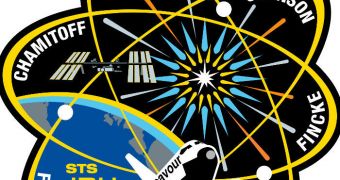After a meeting held yesterday, May 2, NASA officials and mission controllers decided to delay the last flight of space shuttle Endeavour even further. They are now targeting Tuesday, May 10, as the earliest opportunity for the launch attempt.
The delay is caused by the need to replace a section of the orbiter's aft power systems, which gave way during tests conducted on April 29, moments before launch. Initially, NASA believed that the issue would only require a day or two to fix, at the most.
However, as reports from engineering teams at the Kennedy Space Center (KSC) began to come in, it became apparent that the estimate was gravely mistaking. After reassessing the situation on Sunday, May 1, experts scheduled Endeavour to launch on May 8.
Even newer data they obtained yesterday made them reconsider, and delay the earliest launch opportunity for the shuttle even further. Mission controllers say that this will give experts on the ground ample time to take care of business in the appropriate manner.
Representatives for the American space agency say that, if repairs are completed in time for the May 10 launch window, then take-off could occur at around 11:21 am EDT (1521 GMT), Space reports.
According to Mike Moses, the head of the STS-134 mission management team, the six astronauts making up Endeavour's crew for this flight will remain in medical quarantine until the launch date.
“The purpose is to stay away from any contagious illnesses that would take a few days to show up and manifest. The crew reports to a quarantine facility that is on-site at Johnson Space Center – astronaut crew quarters,” Moses said in a press briefing.
During this time, the team will also be conducting a series of simulations and other tests, meant to keep them posted with the procedures they will need to complete during the actual launch, docking and atmospheric reentry.
“It's just refresher training. They'll be doing another simulation with their ascent and entry with flight control teams, but it's a light schedule,” explains Kylie Clem, who is a spokesperson for NASA.
This is the last time that Endeavour will ever fly. It is heading for the International Space Station on a 14-day mission, during which it will deliver the Alpha Magnetic Spectrometer (AMS) particle detector and a load of supplies to the six-astronaut crew of Expedition 27.
Four spacewalks are scheduled for this mission. Once they are done, the American contribution to the ISS would be finalized. The AMS is the last major piece of equipment that NASA needs to install on the orbital facility.

 14 DAY TRIAL //
14 DAY TRIAL //